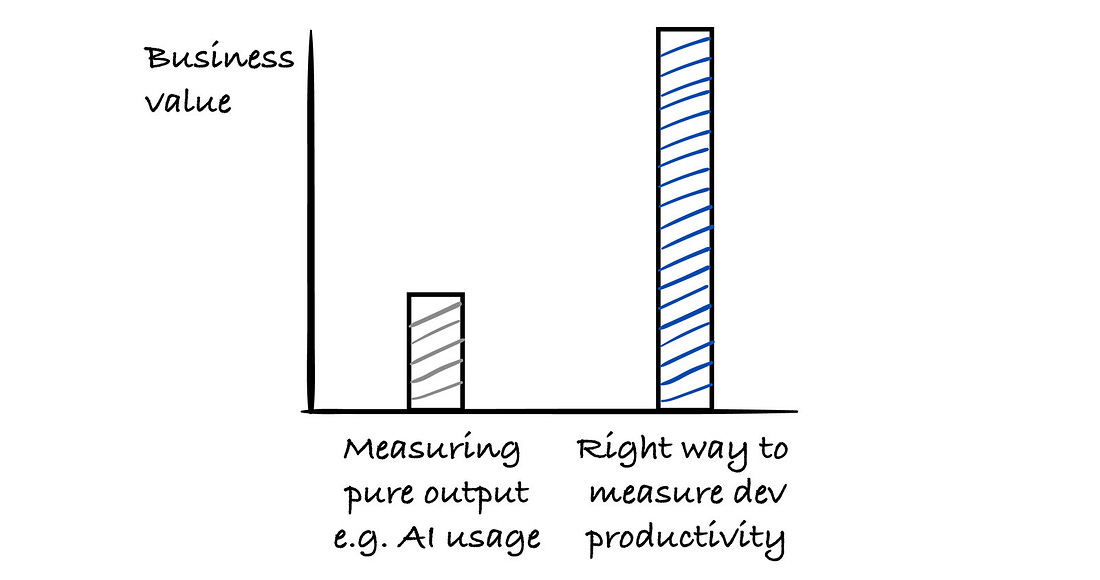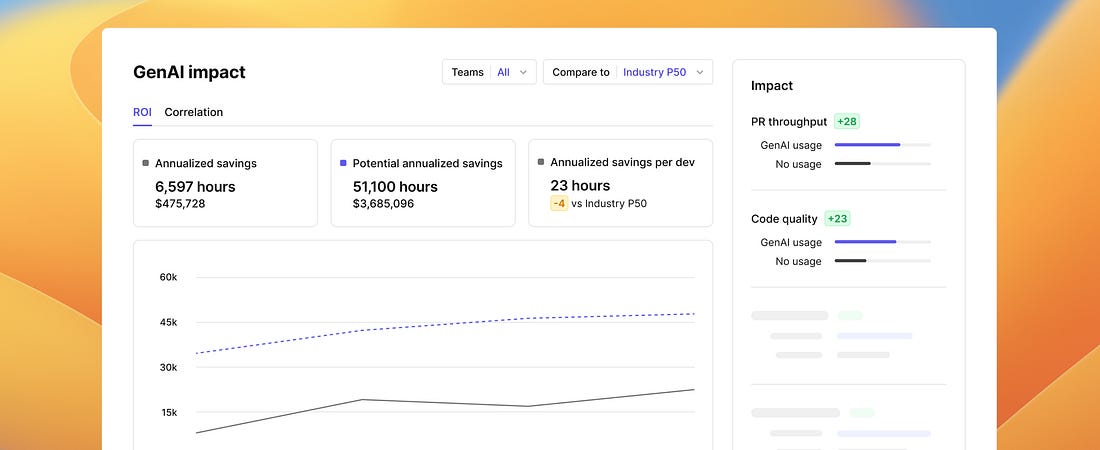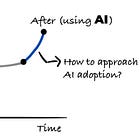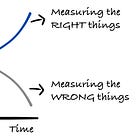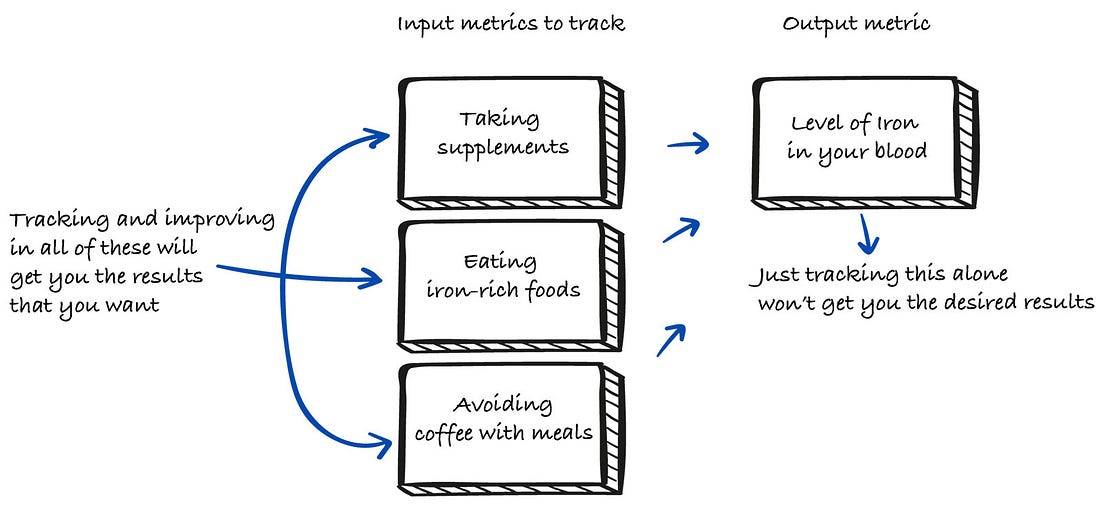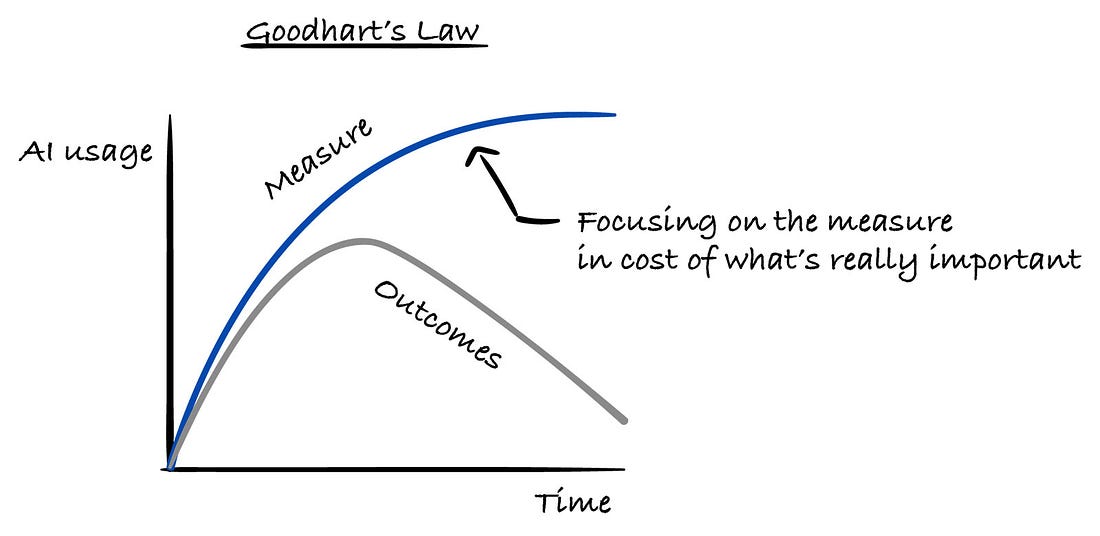Setting Effective Targets for Developer Productivity Metrics in the Age of Gen AI
- Gregor Ojstersek and Laura Tacho from Engineering Leadership <gregorojstersek@substack.com>
- Hidden Recipient <hidden@emailshot.io>
Setting Effective Targets for Developer Productivity Metrics in the Age of Gen AIUsing AI usage as a metric alone is not the way to go, this is what to do instead!Measure the impact of AI in engineering with DX (Sponsored)Everyone’s asking the same question: “What productivity gains are we getting from AI?” With DX, you can get answers about:
Schedule a personalized product tour to see how DX helps you measure engineering productivity and the impact of AI. Let’s get back to this week’s thought! IntroMeasuring developer productivity is an important topic for many organizations. Especially in current times when many organizations are looking at how to increase Software Development productivity by using AI. Some organizations are also enforcing the use of AI or measuring AI usage as a KPI in the performance review. You can find my thoughts on enforcing the use of AI either being a good or a bad thing here: I’ve even heard of some companies thinking about doing leaderboards of who is using the most LLM credits or who has committed the most AI-generated code to the codebase. Which is a totally wrong way to measure productivity. To help us with how to do it the right way and set effective targets for measuring developer productivity, I am happy to have Laura Tacho, CTO at DX as a guest author to today’s newsletter article. Before we hand it over to Laura, I’ll share a bit of my thoughts on measuring developer productivity in combination with pure output. Measuring the wrong things inspires people to try to game the systemIt’s really important to understand that if you purely just measure the output and usage, people will naturally be prone to use that as much as possible, which would provide the wrong results for the business. And it can also inspire pure individualism, which you don’t want in your organization. So, if you measure how much are your engineers using AI by tracking the LLM credits usage, people will set up cron jobs to use as many LLM credits as possible. Which will actually have ZERO effect on business success. On the contrary, the company will lose a lot of money because of it. And same is true with measuring:
All of such measures inspire people to do wrong things. I rather look at these 4 specific things:
And these are the main things I value:
Using AI alone or finishing a lot of tasks or story points doesn’t mean much if you don’t provide value to the business or you don’t share your knowledge with others and your team is not working well together. You can read my thoughts on metrics and how I measure developer productivity in these 2 articles: Now, let’s hand it over to Laura! Setting targets for developer productivity metrics takes careful considerationIn some cases, setting the wrong goals can backfire by creating unintended consequences. Teams might start focusing on optimizing the numbers instead of the system, especially if there are anti-patterns like tying bonuses to individual metrics, or setting blanket targets on metrics teams can't directly control. At the same time, leaders want to drive meaningful improvement and use goals for motivation and accountability. Teams want transparency and direction on where to focus. Even so, it can be difficult to figure out what kind of targets are realistic in the first place. These three practices help engineering leaders avoid pitfalls and encourage their teams to use data to improve the system, leading to the right outcomes:
Without these three things, organizations run the risk of developers feeling mistrusted and micromanaged, teams gaming metrics rather than improving systems, and metrics becoming distorted so they no longer represent reality. Set team goals on controllable input metrics, not output metricsNot all metrics are immediately actionable because they measure big-picture trends, and are often summary metrics that are influenced by many other factors. Setting goals on these kinds of metrics – output metrics – can incentivize the wrong type of behavior and disempower developers, as they feel they can’t meaningfully influence the numbers. On the other hand, a different type of metric – controllable input metrics – are very actionable on the team level and contribute to improving the system. Being able to identify the difference between these different types of metrics is an important skill for any devex leader.
This pattern is not unique to developer experience and can be seen in other parts of life. Let’s imagine you have low levels of iron in your blood. This level is an output metric, and setting a goal on it – without mapping it to controllable input metrics – can make improvement seem out of reach.
Doing these activities will lead to a change in the output metric, which makes them more suitable for goal-setting. Similarly, engineering teams need to identify the actionable inputs that influence the larger output metrics. Depending on an organization's size and complexity, it might still be preferable to set goals on output metric, like improving Change Failure Rate, in order to simplify reporting and align on a single goal. In cases like this, it’s essential that frontline teams go through the process of metric mapping to break down the output metric into controllable input metrics, and that those input metrics have their own goals and structures of reinforcement around them. Avoid gamification with multi-dimensional measurement and aligned incentivesA common objection to setting targets around metrics is the fear that developers will game the system. Gamification is the phenomenon where individuals distort the data in order to make the metrics look good, without actually improving the system. Goodhart’s Law describes this phenomenon, summarized as “when a measure becomes a target, it ceases to be a good metric.” Gamification is dangerous for organizations because while the metrics show surface-level improvements, the reality is that the systems are usually worse off – but those negative changes are largely invisible because they aren’t being measured properly.
When people know they're being evaluated against a specific number, especially if rewards or advancement opportunities depend on it, the temptation to find shortcuts or manipulate metrics becomes stronger than the motivation to make genuine improvements that might take longer to reflect in the measurements. A well-designed system of measurement and intentional culture around using metrics can help protect from the effects of gamification. We know how humans behave when metrics are used for measurement and goal-setting. With that knowledge, it’s up to us to design better systems.
Set realistic targets based on organizational context and strategyWhen determining actual target values, one size doesn't fit all. Consider:
Different teams start from different places. Instead of blanket targets across the organization, consider percentage improvements from each team's current baseline.
Industry benchmarks (like the 75th percentile) provide useful reference points, but remember that context matters.
Improvement isn't linear. For example, moving from the 50th to 75th percentile often requires less effort than moving from the 75th to 90th percentile.
For some metrics, higher isn't always better (e.g., extremely short PR cycle times might indicate inadequate code reviews). Some metrics need SLAs or thresholds rather than continuous improvement targets. Above all, remember that metrics don't replace strategy. They enhance it. Even with robust metrics, you still need human judgment to set appropriate goals in your specific context. Actionable points to get you startedTo apply these principles in your organization:
By following these guidelines, you can create a more productive environment focused on genuine system improvement rather than superficial number manipulation. Last wordsSpecial thanks to Laura for sharing her insights on this very important topic! Make sure to follow her on LinkedIn and also check out DX, they are doing a lot of great things in regards to measuring developer productivity. We are not over yet! What Does a CTO do?Check out my latest video. I am sharing what a CTO does on a daily basis. The role heavily depends on the business and looks completely different based on the size of the organization.  New video every Sunday. Subscribe to not miss it here: Liked this article? Make sure to 💙 click the like button. Feedback or addition? Make sure to 💬 comment. Know someone that would find this helpful? Make sure to 🔁 share this post. Whenever you are ready, here is how I can help you further
Get in touchYou can find me on LinkedIn, X, YouTube, Bluesky, Instagram or Threads. If you wish to make a request on particular topic you would like to read, you can send me an email to info@gregorojstersek.com. This newsletter is funded by paid subscriptions from readers like yourself. If you aren’t already, consider becoming a paid subscriber to receive the full experience! You are more than welcome to find whatever interests you here and try it out in your particular case. Let me know how it went! Topics are normally about all things engineering related, leadership, management, developing scalable products, building teams etc. You're currently a free subscriber to Engineering Leadership. For the full experience, upgrade your subscription. |
Similar newsletters
There are other similar shared emails that you might be interested in:
